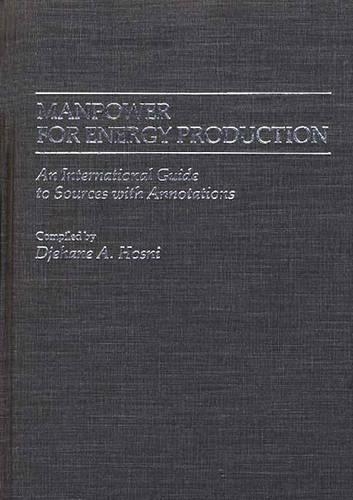
Manpower for Energy Production: An International Guide to Sources with Annotations
(Hardback)
Publishing Details
Manpower for Energy Production: An International Guide to Sources with Annotations
By (Author) Djehane A. Hosni
Bloomsbury Publishing PLC
Greenwood Press
12th November 1986
United States
Classifications
Tertiary Education
Non Fiction
Energy industries and utilities
Microeconomics
016.33112521042
Physical Properties
Hardback
171
Description
Manpower analysis and planning for the energy sector is the cornerstone of any successful national energy program. The human resources aspect of energy problems, however, has received little systematic attention. Responding to the need for a comprehensive information source on this important subject, Professor Hosni's bibliography reviews research completed to date and documents the different strategies that have been developed to cope with changing conditions in the energy market. Providing an international perspective, it draws on the literature of the United States and fifty other countries, with particular attention to the Arab world, where both energy and manpower are critical to future development.
Reviews
Since the human resources aspect of energy has received little systematic attention, this bibliographical guide was prepared to fulfill a need to document and review the literature in the energy-manpower area. The author, an assistant professor of economics at the University of Central Florida, Orlando, has an interest in manpower and has several publications in this area. The energy-manpower area was examined in the context of economic, demographic, and technological considerations. The 280 citations are arranged in eight sections: energy and the economy; energy labor demand; energy employment models; socio-economic impacts of energy production; education, training, and manpower development; women in energy; a union perspective; and future energy options and their employment implications. This is the only subject approach, since there is no subject index. There is, however, an author index. The entries include books, articles, conference papers, reports by research firms and universities, and publications of governmental and international organizations. Each entry has a descriptive abstract. Coverage is of fifty-one countries worldwide, with a special reference to the Arab world. The appendices include a geographical index, an income group listing for the countries, a list of U.S. regions, and a directory of publishers. Coverage is from the first oil crisis in 1973 to the present time. The introduction presents a brief description of the highlights of the major findings in the literature as found in this bibliography. This guide is a scholarly publication prepared by an author who is competent in this field. It is a very useful addition to the literature in energy manpower, since itcollects together in one volume citations to that literature which were difficult to find previously. It also identifies areas where further research is needed.-ARBA
"Since the human resources aspect of energy has received little systematic attention, this bibliographical guide was prepared to fulfill a need to document and review the literature in the energy-manpower area. The author, an assistant professor of economics at the University of Central Florida, Orlando, has an interest in manpower and has several publications in this area. The energy-manpower area was examined in the context of economic, demographic, and technological considerations. The 280 citations are arranged in eight sections: energy and the economy; energy labor demand; energy employment models; socio-economic impacts of energy production; education, training, and manpower development; women in energy; a union perspective; and future energy options and their employment implications. This is the only subject approach, since there is no subject index. There is, however, an author index. The entries include books, articles, conference papers, reports by research firms and universities, and publications of governmental and international organizations. Each entry has a descriptive abstract. Coverage is of fifty-one countries worldwide, with a special reference to the Arab world. The appendices include a geographical index, an income group listing for the countries, a list of U.S. regions, and a directory of publishers. Coverage is from the first oil crisis in 1973 to the present time. The introduction presents a brief description of the highlights of the major findings in the literature as found in this bibliography. This guide is a scholarly publication prepared by an author who is competent in this field. It is a very useful addition to the literature in energy manpower, since itcollects together in one volume citations to that literature which were difficult to find previously. It also identifies areas where further research is needed."-ARBA
Author Bio
sni /f Djehane /i A. /r comp.
